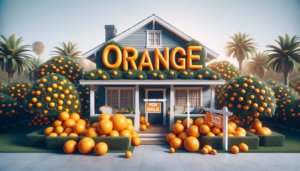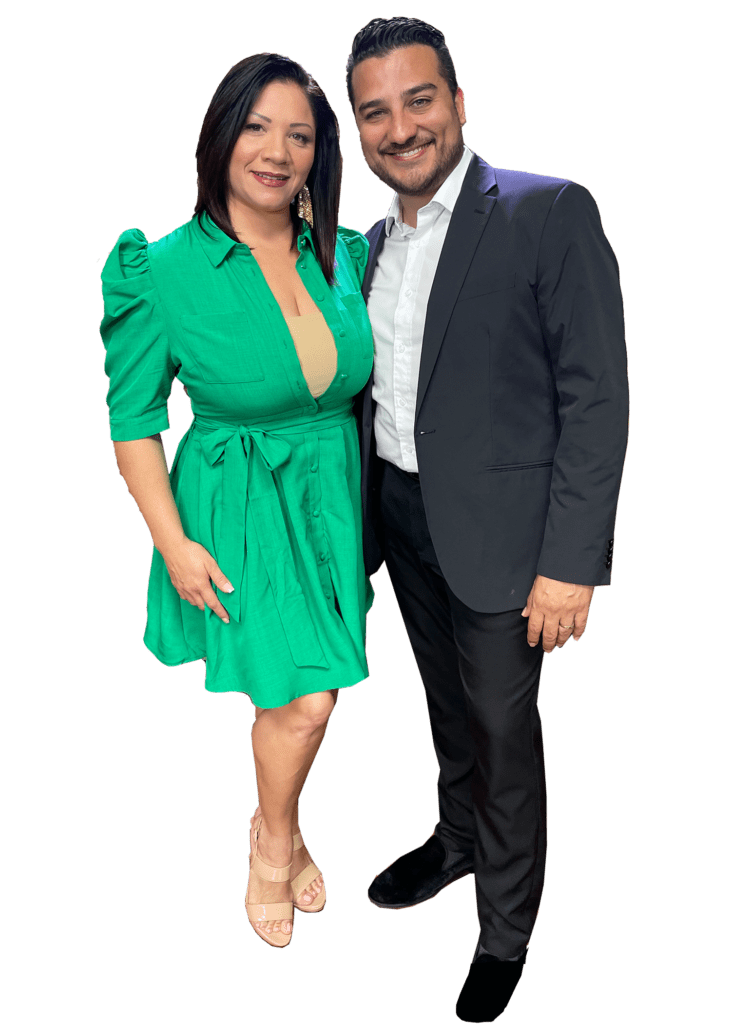How To Buy a House With No Money in 2022 | Incentives
Buying a home is more accessible than many people think.
Gone are the days of needing tens of thousands of dollars to become a homeowner. Today, you don’t need a 20 percent down payment to buy a home. In fact, there are no-money-down mortgages available to you right now.
If you’re wondering how to buy a house with no money down, keep reading to start your journey to homeownership.
Thirty-eight percent of prospective buyers say that saving for a down payment is their biggest obstacle to homeownership. Considering the median home sale price of $356,700, the average first-time buyer would spend $24,969 on a down payment.
But you can buy a house without that $25,000.
There are resources for down payment assistance that provide a clear path to homeownership. Current legislation awaiting a vote in Congress would offer $15,000 tax credits and $25,000 grants to first-time buyers.
Better still, you don’t have to wait for new federal legislation to buy your first home. Here’s how you can buy a house with no money down today.
If you could live in your dream home for zero dollars down, would you still choose to rent?
You don’t need a huge down payment to buy a home. These no down payment options exist to help first-time home buyers start building equity.
But what about closing costs?
There’s also down payment assistance available to help you get a mortgage with no money out of pocket. Federal, state, and non-profit agencies — and even mortgage lenders — offer grants and loans to support first-time buyers.
1. Homebuyer Down Payment Assistance
Down payment assistance (DPA) can help you buy a home without immediate cash. This includes several federal, state, and non-profit programs for first-time home buyers.
At Homebuyer, we partner with the Chenoa Fund to make homeownership possible without paying anything out of pocket.
Through our partnerships, Homebuyer.com provides DPA for buyers purchasing a home with an FHA loan, offering an affordable and user-friendly path to homeownership.
Buyers have two choices — a 3.5 percent second loan to cover your down payment, or a 5 percent second loan to cover down payment and closing costs
If you’re a middle-income earner, or lower, the second loan has zero interest and no monthly payments. Plus, it’s a forgivable second mortgage. If you make your housing payments on time, the loan is forgiven and you never have to pay it back.
The 3.5 percent option is forgiven after you make your first 36 mortgage payments on time.
The 5 percent option is forgiven after you make 10 years of payments without falling 60 or more days behind. If you do fall behind, there is still no interest and no payments — you’ll just have to pay back the second lien when you sell or refinance the house.
If you’re a higher-income earner, the second loan has a monthly payment. Buyers can choose a 10-year loan with no interest, or a 30-year loan with 5 percent interest.
Down payment assistance programs typically have credit history and income requirements. Programs for first-time home buyers may require completion of a mortgage education course.
These down payment assistance options are available now and you can apply here.
2. USDA Loans With No Money Down
USDA loans have no down payment requirements or credit score minimums. Designed to encourage increased homeownership in rural areas, these loans provide subsidized interest rates.
Applicants must prove creditworthiness. Lenders typically require a credit score of 620 or higher to apply.
USDA loan applicants must:
- Be a legal permanent U.S. resident
- Prove creditworthiness
- Maintain dependable income
- Have a household income matching 115 percent of the area’s median income or lower
- Be the primary residence in a rural area
USDA mortgages can be used to purchase these property types:
- Existing home
- New construction
- Manufactured homes
- Condos
- Townhouses
- Short sale or foreclosed homes
Buyers are typically responsible for closing costs, lender fees, and mortgage insurance, though there are opportunities to have some of these expenses covered by the seller or your lender.
You can receive seller concessions and lender credits, where the seller and lender will pay some, or all, of your closing costs.
3. VA Home Loans With No Down Payment
VA loans provide home-buying options for U.S. military members, veterans, and their spouses. Like USDA loans, VA loans have no down payment or credit score requirements, though most lenders prefer a credit score of 580 or higher.
You must have a certificate of eligibility (COE) to apply for a VA loan. This certifies your service history and current duty status to prove you’re eligible.
VA eligibility requires:
- You served 90 days of active wartime service
- You served 180 days of active peacetime service
- You served six years in the National Guard or Reserves
- You’re the spouse of a service member who died in the line of duty or following a service-related disability
The VA guarantees loans against losses with an entitlement, which is similar to private mortgage insurance. This allows lenders to offer a zero-down payment purchase with less risk and lower rates.
VA loan borrowers are exempt from certain closing costs, like underwriting and attorney fees.
Conventional Loan 97 for First-Time Home Buyers
The Conventional Loan 97 allows borrowers to secure a conventional loan mortgage with a 3 percent down payment. Personal contribution isn’t required. Gifts, grants, and other DPA can cover your down payment.
The Conventional Loan 97 is an alternative to FHA loans. It has fewer up-front costs and no permanent mortgage insurance requirements.
Borrowers must meet the following criteria to be eligible:
- At least one borrower must be a first-time home buyer
- Mortgages must have a fixed-rate interest
The Conventional Loan 97 can’t be used to purchase manufactured homes. Eligible property types include single-family homes up to four units, condos, and planned developments.
HomeReady mortgages from Fannie Mae are another loan option for low-income buyers. Borrowers are eligible with a 3 percent down payment and a credit score of 620 or higher.
Home buyer education is required if all borrowers are first-time home buyers. All residents may submit their income for consideration and improve chances of approval.
There are also no minimum personal contribution requirements for the down payment. This investment can be covered by gifts, grants, and other DPA programs.
HomeReady loans require mortgage insurance that can be canceled once the buyer reaches 20 percent equity.
Freddie Mac Home Possible Mortgages
Freddie Mac’s Home Possible loans offer low down payment mortgages with a minimum 3 percent down payment. Down payment funding is flexible with no personal cash requirements.
A credit score of 660 or higher is required for approval. Borrowers’ income can’t exceed 80 percent of the area median income (AMI), which is available on the Freddie Mac site.
Home Possible mortgages may require mortgage insurance and buyers can cancel their policy when they reach 20 percent equity.
FHA Loans for Buyers With Low Credit Scores
FHA loans have a minimum 3.5 percent down payment requirement for borrowers with a credit score of 580 or higher. FHA loans have flexible credit score requirements. Borrowers with scores as low as 500 are eligible for approval if they invest a down payment of 10 percent or more.
FHA loans also require proof of employment and income. Borrowers must have a debt-to-income ratio of 43 percent or less to qualify under standard guidelines, but FHA may allow ratios up to 56.9 percent with compensating factors.
FHA loans can only be used to purchase a primary residence. County-specific loan limits apply, reaching up to $822,375 in high-cost areas.
Conventional Loans With 3 Percent Down
Conventional loans are the most popular loan type among buyers. Standard conventional loans require a minimum 3 percent down payment with a credit score of 620 or higher.
Conventional loans require mortgage insurance with a down payment under 20 percent.
Conventional loans aren’t backed by the government, so lender requirements may vary. Conforming conventional loan limits follow FHFA standards. The current loan limit is $548,250 for single-unit homes in most U.S. counties.
How To Buy a House With No Money FAQs
With the right loan type, many first-time home buyers can buy a house with no up-front costs. You don’t need to save a 20 percent down payment.
When you buy a house with no money down, you can lock in your housing payment long term, protect yourself from rent increases, and you can build wealth with a similar monthly payment as your rent.
What credit score do I need to buy a house?
You can buy a house with a credit score as low as 580, and sometimes lower depending on your lender.
VA and USDA loans have no official minimum, though lenders are most likely to approve buyers with a credit score of 580 or higher.
Conventional loans require a credit score of 620 or higher.
You may still qualify for a loan with a credit score below 580. FHA loans accept credit scores as low as 500 if you can make a 10 percent or higher down payment. Consult with your lender to determine your options.
Are there no down payment loans available?
Homebuyer’s down payment assistance program, along with VA and USDA loans, have no down payment requirements for qualification.
Each loan type has other eligibility requirements for approval. VA loans are only available to service members and veterans who meet duty requirements, as well as their spouses.
USDA loans can only be used to purchase rural properties. This covers 91 percent of the U.S., including rural areas, small towns, and suburbs. This excludes densely populated metropolitan areas.
How can I save money for a down payment?
Down payment assistance programs help first-time and low-income buyers afford a home. Each program has specific eligibility requirements.
Some loans are flexible and accept down payments entirely funded through gifts, grants, and loans. You may not have to contribute your own savings. This includes DPA funds and assistance from family or friends.
Otherwise, the best way to save is with a comfortable budget and savings plan. Determine which loans you’re eligible for and their down payment requirements to set a goal. Consider how much you can save each month to determine your home-buying timeline.
Is private mortgage insurance (PMI) bad?
Mortgage insurance isn’t good or bad. Lenders may require PMI to protect their investment in case a borrower can’t continue to make payments. And this protection is what allows lenders to offer so many low down payment mortgage options.
Some loan types require PMI, and it’s also required for borrowers who make a down payment less than 20 percent of the home’s sale price. Some policies exist for the life of your loan, while others can be canceled once homeowners reach 20 percent equity.
Homeowners pay PMI up-front, with an additional monthly payment, or a combination of the two.
Consider this: Home prices are generally increasing. The additional monthly PMI payment may be more cost-effective than waiting until you have a larger down payment.
Consider what loan types you’re eligible for and their mortgage insurance requirements. Anticipate additional expenses and budget accordingly.
Low and no down payment mortgages make homeownership accessible for first-time buyers. Know which loans you’re eligible for when you’re thinking about how to buy a house with no money. Then, get pre-qualified for the mortgage of your choice once you’re ready to start house hunting.
Article courtesy of: Dan Green and Novus Home Mortgage











